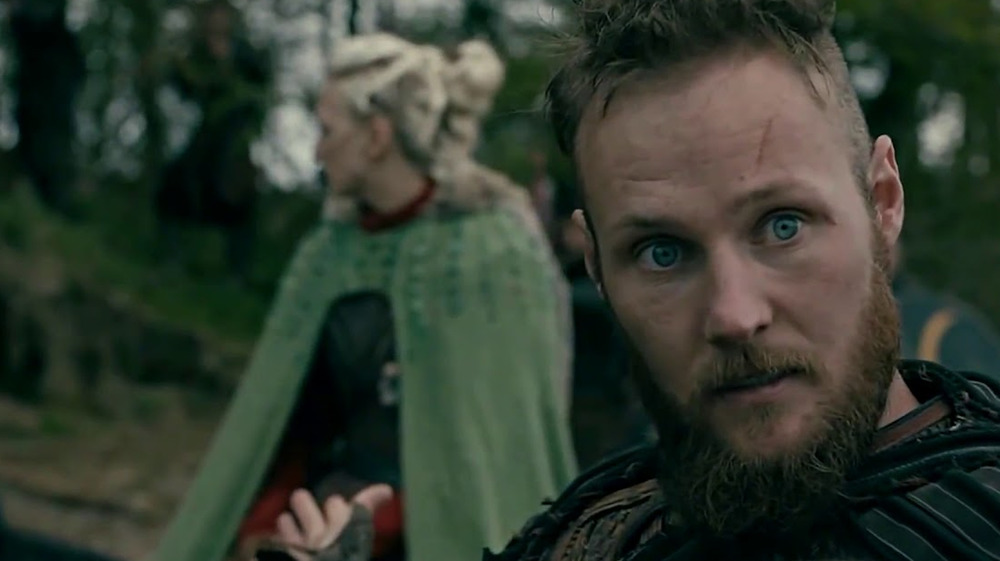What The Serpent In The Vikings Season 6 Part 2 Trailer Really Means
When the trailer for the second half of Vikings' sixth and final season dropped earlier in December, fans could tell the series was ready to go out playing the hits. There were hints of betrayal. Promises of murder. Extravagant beards and braids. Armies amassed opposite each other on the field of battle. Giant sea serpents. Political intrigue.
Wait, go back one. Giant what? Okay, so it's not entirely familiar sights cranked up to eleven. The show's audience hasn't quite seen anything like the huge snake emerging from the water, apparently preparing to devastate a Norwegian ship. Its appearance in the trailer is cut together with a shot of Ubbe (Jordan Patrick Smith) fighting to control a ship in a storm, which seems to indicate that the monster is somehow connected with his quest to reach the Golden Land in the west, presumably the North American continent.
Given the show's penchant for nightmares and vision quests it seems unlikely that Ubbe's journey is actually going to end in shipwreck via serpentine kaiju. The real question is what does the giant snake mean? It could just be an indication that Ubbe's gone farther than any Viking before him, deep into the "there be dragons" part of the map. There's also another, more likely possibility that the serpent could be symbolic.
Why the serpent could be an evil omen for Ubbe and the Vikings
As pointed out by Screen Rant, the snake could be representative of Jörmungandr, the World Serpent, who in Norse mythology is one of three children of Loki and a giantess. The serpent was tossed into the ocean surrounding Midgard by Odin, where it grew so large it eventually circled the globe and was able to bite its own tail. This image is reminiscent of the worm Ouroboros, a much older symbol of circularity, infinity, and natural cycles.
Ragnarok, the final battle at the end of the world in Norse legend, is said to begin when Jörmungandr releases his tail and emerges from the water, spraying its venom to poison the sea and the sky. There he is said to battle Thor, and while the god of thunder succeeds in killing the snake, the poison soon overwhelms his system and kills him.
If the serpent from the trailer is meant to represent Jörmungandr, then that can't be good news for our Scandinavian anti-heroes. Ending the series with the literal destruction of the universe would be quite the counter-historical note to go out on –– eat your heart out, Inglourious Basterds –– so it's more likely that the monster symbolizes the end of an era — the turning of an age. As one character intones early in the trailer, "Perhaps the Golden Age of the Vikings is gone." Jörmungandr could mean not the end of the entire world, but the end of the Viking Age as we know it. That, at least, would be a bit more historically accurate.
Regardless of the sea serpent's exact meaning, the end of an era certainly beckons for fans of the series. Vikings' epic voyage will at last come to an end with the release of its final half-season beginning December 30.

